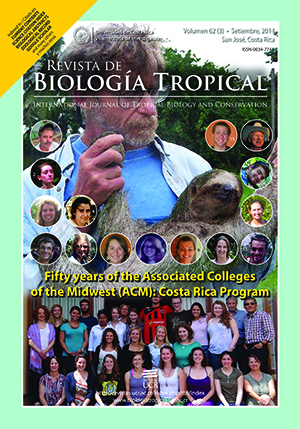Abstract
Onychophora have undergone a new wave of taxonomic revisions in the last three years. After a recent revision, only two species of Macroperipatus are registered from Brazil: Macroperipatus ohausi and Macroperipatus geayi. The former was only the second species of Onychophora to be described from Brazil, and is herein redescribed, illustrated, and its taxonomic status revised. Macroperipatus ohausi had only been collected at the type locality, Petrópolis, state of Rio de Janeiro, but has not been found there since its discovery. In 2009 we collected two specimens of this species in an Atlantic rain forest fragment in Nova Iguaçu in RPPN dos Petroleiros (also state of Rio de Janeiro). The color of the new specimens was interpreted and described based on the NBS/ISCC System of Color Designation, and corresponds only weakly to that described in earlier publications on M. ohausi. The identification of M. ohausi was based solely on its morphology and compared with its original description. In addition, a female syntype of M. ohausi deposited in the Zoologisches Museum (Hamburg) was examined. We reinvestigated its external morphology and concluded that the dorsal papillae have been misinterpreted in M. ohausi in previous studies of its integument. The new specimens examined are conspecific with M. ohausi mainly by having conical primary papillae, different sized accessory papillae, and by the number of legs. Our material resembles the original description of M. ohausi, for example, in spinous pad and nephridial tubercles, even though these features are not represented in the original description and redescription of M. ohausi; these features are further detailed here. We concluded that the dorsal papillae morphology of M. ohausi, shares diagnostic characters, for example, with representatives of the genera Peripatus and Epiperipatus. The dorsal papillae are rounded and not square as in the original description and redescription. Another argument that supports our conclusion is that the RPPN dos Petroleiros, the locality where the new samples were collected, belongs to the same mountain chain and Atlantic mosaic as the original material of M. ohausi. Furthermore, a male of M. ohausi is described here for the first time. Based on our morphological data, we transfered this species to the genus Epiperipatus, proposing a new combination, E. ohausi.##plugins.facebook.comentarios##

This work is licensed under a Creative Commons Attribution 4.0 International License.
Copyright (c) 2014 Revista de Biología Tropical
Downloads
Download data is not yet available.






